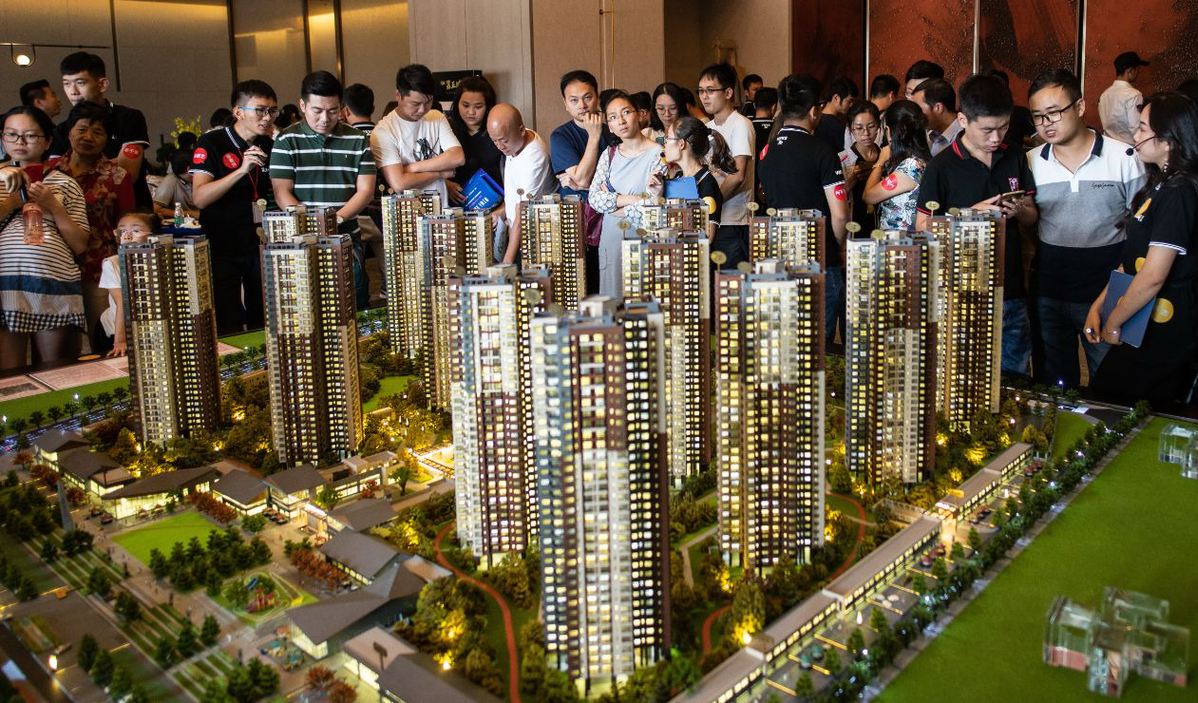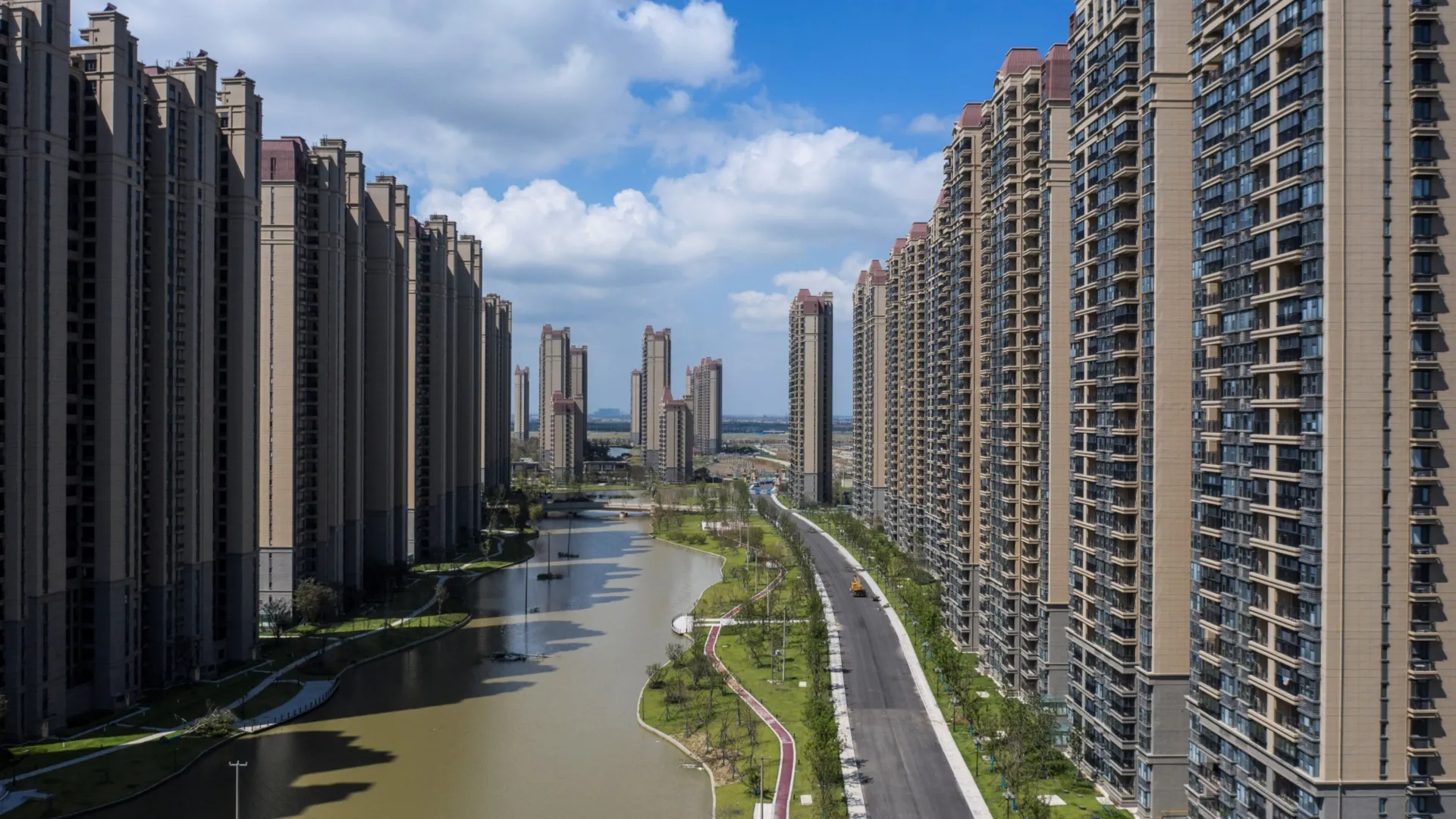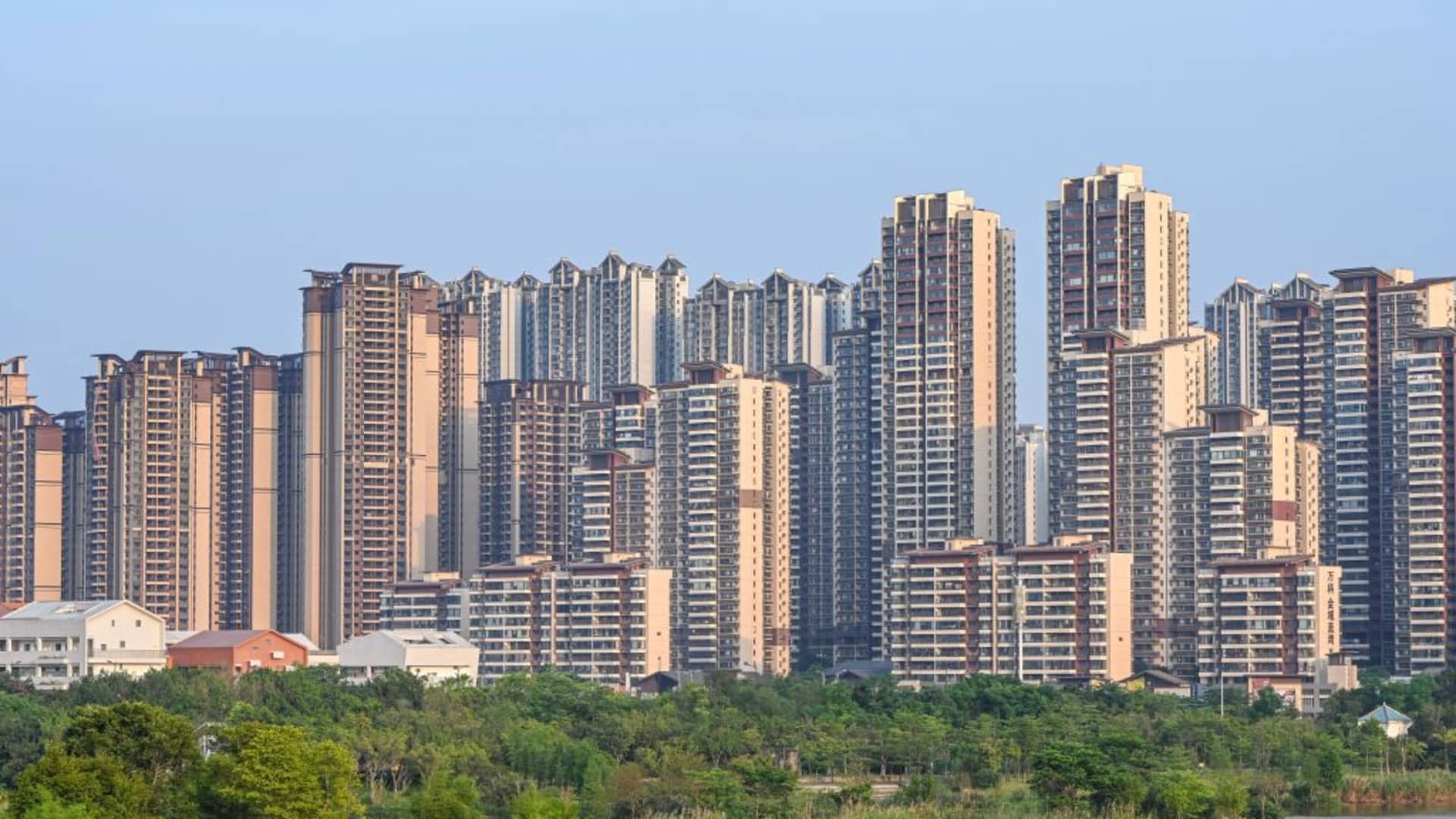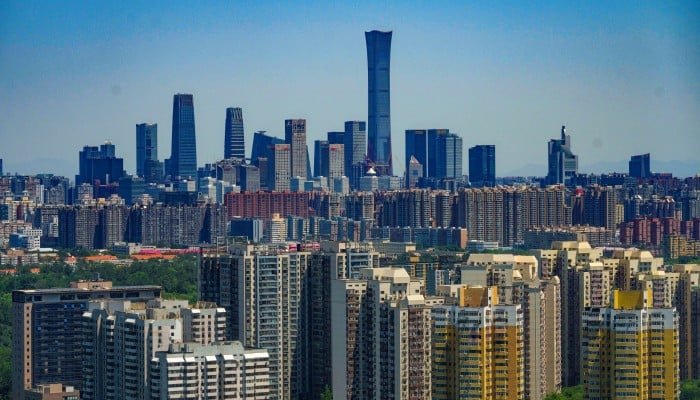In 2019, whispers of stability began to ripple through China’s real estate market, a sector that’s long been a cornerstone of the nation’s economic growth. After years of rapid expansion, skyrocketing prices, and speculative frenzies, the Chinese government’s firm stance on “housing is for living, not for speculation” set the stage for a pivotal shift. This article explores the factors behind the anticipated stabilization of China’s property market in 2019, as reported by People’s Daily, and why it mattered to millions of homebuyers, investors, and policymakers. Let’s dive into the dynamics, policies, and real-world impacts that shaped this moment, with a conversational tone that feels like we’re chatting over coffee.
Why China’s Real Estate Market Matters
China’s property sector isn’t just about bricks and mortar—it’s a cultural and economic juggernaut. For decades, real estate has been a primary wealth-building tool for Chinese families, with homeownership rates hovering around 90%. The market’s ups and downs affect household savings, local government revenues, and even global commodity prices. In 2019, the sector was at a crossroads, balancing growth with government efforts to curb speculation.
A Personal Connection to the Market
Growing up in a family where real estate was the go-to investment, I saw firsthand how property purchases shaped our financial decisions. My uncle, a small business owner in Shanghai, spent years saving for an apartment, only to watch prices soar out of reach by 2018. When news broke in 2019 that the market might stabilize, it felt like a lifeline for people like him—hoping for a chance to buy without betting their life savings on a bubble.
The Backdrop: A Market in Flux
By 2019, China’s real estate market had been on a rollercoaster. The early 2000s saw explosive growth, fueled by urbanization and a burgeoning middle class. But by 2018, concerns about overheated prices and unsustainable debt led to tighter regulations. The government’s “three red lines” policy, introduced later, was still a whisper in 2019, but the groundwork for cooling the market was evident.
What Sparked the Stabilization Talk?
A People’s Daily article in May 2019, echoing a China Daily report, highlighted the government’s push for a “long-term mechanism” to stabilize the market. This wasn’t just rhetoric—it was a signal of coordinated policies aimed at balancing supply, demand, and prices. The Political Bureau of the Communist Party of China (CPC) emphasized a “one city, one policy” approach, allowing local governments to tailor solutions to their unique challenges.
Key Drivers of Stabilization
Several factors converged in 2019 to set the stage for a more stable property market:
- Government Policies: The “housing is for living” mantra discouraged speculative buying, prioritizing actual homeownership.
- Local Tailoring: Cities like Beijing and Shanghai implemented stricter purchase restrictions, while smaller cities eased rules to boost demand.
- Market Adjustments: Developers adopted a cautious approach, slowing land acquisitions to align with demand.
- Consumer Sentiment: Buyers were becoming more rational, focusing on homes for living rather than investment.
Government Policies: The Backbone of Stability
The Chinese government’s role in the 2019 stabilization effort was pivotal. Unlike the freewheeling days of the early 2000s, policymakers were now laser-focused on preventing bubbles while ensuring affordability.
The “One City, One Policy” Approach
This flexible strategy allowed cities to customize regulations. For example, first-tier cities like Beijing maintained tight controls to cool prices, while third-tier cities offered incentives to spur sales. This approach aimed to prevent drastic price swings, ensuring “stable land prices, stable house prices, and stable price expectations,” as noted by Shaun Brodie of Cushman & Wakefield.
Curbing Speculation
The government cracked down on speculative buying, which had driven prices to unsustainable levels. Policies included higher down payments for second homes and restrictions on multiple property purchases. These measures resonated with folks like my cousin in Guangzhou, who was thrilled to see prices stabilize enough to consider buying her first home without competing with investors.
Market Trends in 2019: A Closer Look
Data from 2019 paints a picture of a market finding its footing. According to JLL, residential transaction volumes in 20 major cities dropped 29.2% quarter-on-quarter, signaling a cooling trend. Yet, new home prices in first- and second-tier cities remained steady, suggesting resilience in high-demand areas.
Tiered City Dynamics
- First-Tier Cities (e.g., Beijing, Shanghai): Prices held firm due to strong demand and limited supply.
- Second-Tier Cities (e.g., Hangzhou, Chengdu): Moderate growth with cautious buyer sentiment.
- Third-Tier Cities: Mild sales increases, but challenges persisted due to oversupply.
Rental Market Insights
With over 200 million renters in China, the rental market was a key focus. Valued at over 1 trillion yuan, it thrived in urban centers where migrant workers fueled demand. Policies in 2019 supported rental housing, offering a safety net for those priced out of ownership.
Comparing 2019’s Stabilization to Previous Years
To understand 2019’s significance, let’s compare it to earlier trends:
| Year | Market Trend | Key Policy | Outcome |
|---|---|---|---|
| 2016 | Rapid price growth | Limited restrictions | Speculative boom |
| 2018 | Cooling measures introduced | Purchase restrictions tightened | Slower sales |
| 2019 | Stabilization efforts | “One city, one policy” | Steady prices, rational demand |
This table shows how 2019 marked a shift from boom-and-bust cycles to a more balanced approach. Unlike 2016’s frenzy, 2019 focused on sustainability, which was music to the ears of first-time buyers.
Pros and Cons of the 2019 Stabilization Efforts
Pros
- Affordability: Stable prices made homeownership more accessible for young families.
- Reduced Speculation: Policies deterred investors, prioritizing genuine buyers.
- Local Flexibility: Tailored policies addressed unique city challenges.
Cons
- Slower Growth: Developers faced reduced profits, impacting investment.
- Third-Tier Struggles: Smaller cities struggled with oversupply and weak demand.
- Uncertainty: Some buyers remained cautious, awaiting further price clarity.
Real-World Impacts: Stories from the Ground
The stabilization efforts weren’t just numbers—they changed lives. Take Li Wei, a 30-year-old teacher in Chengdu. In 2018, she couldn’t afford a modest apartment due to soaring prices. By mid-2019, relaxed restrictions in her city and stable prices allowed her to secure a mortgage. “It felt like the government was finally on our side,” she told me, her eyes lighting up with relief. Stories like hers highlight the human side of these policies.
A Touch of Humor
Navigating China’s property market in 2019 was like trying to buy a concert ticket during a flash sale—stressful, but you felt a rush when you succeeded. The government’s policies were the equivalent of adding more tickets to the sale, giving everyone a fairer shot.
People Also Ask (PAA)
What caused China’s real estate market to stabilize in 2019?
Government policies like “housing is for living” and “one city, one policy” curbed speculation and balanced supply and demand.
How did the government stabilize the property market?
Through tailored local policies, purchase restrictions, and a focus on long-term mechanisms to prevent price volatility.
Where can I find reliable data on China’s 2019 property market?
Check sources like China Daily, JLL, or the National Bureau of Statistics for accurate insights.
What are the best tools for analyzing China’s real estate trends?
Platforms like China Index Academy and Knight Frank offer robust data and reports for market analysis.
Where to Get Reliable Information
For those keen to dive deeper, trusted sources include:
- China Daily: Offers detailed reports on policy changes and market trends.
- National Bureau of Statistics: Provides official data on sales and prices.
- Cushman & Wakefield: Delivers expert analysis on China’s property sector.
Best Tools for Tracking China’s Real Estate Market
To stay ahead, consider these tools:
- China Index Academy: Tracks sales and inventory across major cities.
- Knight Frank Reports: Offers global perspectives on China’s market.
- JLL Market Insights: Provides data-driven forecasts for investors.
Challenges and Risks in 2019
Despite the optimism, risks lingered. Third-tier cities faced oversupply, with empty apartments dotting the landscape. Developers, cautious after years of aggressive expansion, scaled back projects, which slowed economic activity in some regions. The government’s tightrope walk—balancing growth with stability—wasn’t without hiccups.
The Oversupply Issue
In smaller cities, unsold homes piled up, creating a drag on local economies. This oversupply, estimated at millions of units, challenged policymakers to boost demand without reigniting speculative fires.
Developer Caution
Major developers like China Vanke adopted a wait-and-see approach, reducing land purchases. While this stabilized prices, it also meant fewer new projects, impacting construction jobs.
Looking Ahead: Lessons from 2019
The stabilization of 2019 laid the groundwork for future policies. It showed that targeted interventions could tame a volatile market without crashing it. However, the seeds of the 2020–present crisis, with giants like Evergrande faltering, were already sown. The lesson? Stability is fragile, and long-term success requires addressing structural issues like debt and demographics.
A Hopeful Note
For every family like Li Wei’s, 2019 was a beacon of hope—a chance to own a home without chasing a runaway market. It wasn’t perfect, but it was progress. As my uncle in Shanghai put it, “For once, the market felt human again.”
FAQ
What was the main goal of China’s 2019 real estate policies?
The goal was to stabilize prices and curb speculation, ensuring homes were for living, not investment.
Did home prices drop significantly in 2019?
No, prices in first- and second-tier cities remained steady, while third-tier cities saw mild increases.
How did the “one city, one policy” approach work?
It allowed local governments to tailor regulations, balancing supply and demand based on regional needs.
Were there risks to the 2019 stabilization?
Yes, oversupply in smaller cities and developer caution posed challenges to sustained growth.
Where can I learn more about China’s property market trends?
Explore China Daily, JLL, or Knight Frank for reliable data and insights.
Conclusion
China’s real estate market in 2019 was a turning point—a moment when thoughtful policies began to tame a wild beast. The government’s focus on stability, affordability, and rational demand offered hope to millions. While challenges like oversupply and cautious developers persisted, the groundwork for a healthier market was laid. For readers looking to understand China’s property landscape or invest wisely, 2019’s lessons remain relevant: balance is key, and homes are for living. Stay informed with trusted sources, and maybe, like Li Wei, you’ll find your own piece of the dream.



